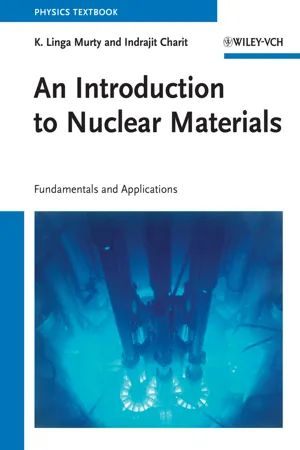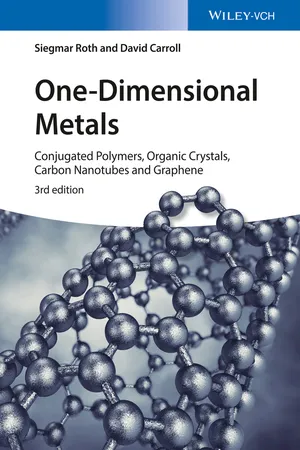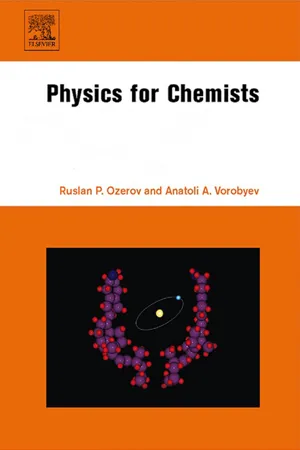Physics
Fundamental Lattices
Fundamental lattices are the smallest repeating patterns in a crystal lattice, representing the arrangement of atoms or molecules in a crystal structure. They are defined by a set of basis vectors that can be used to generate the entire lattice through translation. Fundamental lattices play a crucial role in understanding the physical and mechanical properties of crystalline materials.
Written by Perlego with AI-assistance
Related key terms
Related key terms
1 of 4
Related key terms
1 of 3
6 Key excerpts on "Fundamental Lattices"
- eBook - ePub
An Introduction to Nuclear Materials
Fundamentals and Applications
- K. Linga Murty, Indrajit Charit(Authors)
- 2013(Publication Date)
- Wiley-VCH(Publisher)
Figure 2.2 .Figure 2.2 Materials science and engineering tetrahedron.This theme is equally applicable to the nuclear materials. For example, materials scientists and engineers study microstructural features (grain size, type of second phases and their relative proportions, grain boundary character distribution to name a few) to elucidate the behavior of a material. These are structural features that are influenced by the nature of the processing techniques (casting, rolling, forging, powder metallurgy, and so forth) employed, leading to changes in properties. This understanding will be very helpful as we wade through the subsequent chapters.A lattice is an array of points in three dimensions such that each point has identical surroundings. When such lattice point is assigned one or more atoms/ions (i.e., basis), a crystal is formed. In this chapter, we present a simple treatment of the crystal structure and relate it to its importance with respect to nuclear materials. There are 7 basic crystal systems and a total of 14 unique crystal structures (Bravais lattices) that can be found in most elemental solids. These are based on the crystal symmetry and the arrangement of atoms as described in the following sections.2.1.1 Unit Cell
A unit cell is the smallest building block of a crystal, which when repeated in translation (i.e., with no rotation) in three-dimension can create a single crystal. Therefore, a single crystal or a “grain” in a polycrystalline material would contain many of these unit cells. A general unit cell can be created based on three lattice translation vectors (a , b , and c ) on three orthogonal axes and interaxial angles (α , β , and γ ), which are also known as lattice parameters or lattice constants. Figure 2.3 illustrates the definitions of the lattice parameters and the angles. There are seven basic crystal systems. They are summarized in Table 2.1 - eBook - ePub
- Andre Moliton(Author)
- 2013(Publication Date)
- Wiley-ISTE(Publisher)
Chapter 5Crystalline Structure, Reciprocal Lattices and Brillouin Zones
5.1. Periodic lattices
5.1.1. Definitions: direct lattice
A lattice is a periodic (hence regular) arrangement of points called nodes. At each node the base of an atom is attached, the nature of which depends on the solid.In 3D, the lattice is defined by three fundamental vectors denoted , that are such that the atomic arrangement is identical around a point P defined with respect to the origin O by , and around a point P ’ defined by . The vector must be such that where is a translational vector defined by , and where n 1 , n 2 and n 3 are integers.Furthermore, we can see that the lattice, which is characteristic of crystalline structures, is created by the addition (superposition) of the base (ellipsoid) to each node (point) of the crystal.Thus, any two points of a lattice are always linked to one another by an appropriate translational vector .Figure 5.1. Imaginary crystal element where nodes are represented by points encircled by an ellipsoid, representing the base of an atomIn the 2D figure above we can see that the atomic environment is identical around points P and P’ with each being linked to one another by the vector which is such that n1 = 2 and n2 = 3. The vectors and shown in the figure are fundamental vectors.The parallelepiped defined by the fundamental vectors is called the primitive unit cell, and is the smallest unit possible. The volume of the primitive unit cell is equal to - eBook - ePub
One-Dimensional Metals
Conjugated Polymers, Organic Crystals, Carbon Nanotubes and Graphene
- Siegmar Roth, David Carroll(Authors)
- 2015(Publication Date)
- Wiley-VCH(Publisher)
polycrystalline. They are composed of microcrystalline domains or grains, which stick together to form the bulk solid. The diameter of a grain can be from fractions of a micrometer up to several millimeters.The long-range order in a crystal leads to the crystal lattice. In a crystal lattice, the regular arrangement of the atoms (or molecules) is periodic; the same pattern is repeated over and over again (cf. sodium lattice in Figure 3.2 ; sodium chloride lattice in Figure 3.4 . Three repeating units in each direction are shown.) In order to classify the many different lattice types, their symmetry properties are used. (There are many textbooks of crystallography. However, Ashcroft and Mermin [1] has long been a standard for understanding crystal symmetries at the elementary level.) The lattices in Figures 3.2 and 3.4 are cubic. A cubic elementary cell, which is a commonly found repeating unit, can be constructed as indicated in bold in the upper right corner. For the sake of clarity, only the atoms at the surface of the crystal are shown while the atoms “inside” are omitted. (Examples of textbooks on crystal structure and chemistry are [4–6].)Crystal lattice of sodium metal.Figure 3.2This first example (Figure 3.2 ) is of a simple cubic system. That is, each site of the mental construct of the lattice (the mathematical arrangement of points in a regular square array) is occupied by an atom to form a real lattice of the solid. The subtlety (and formality) of forming the mental construct first, then filling in with atoms is an important one. After all, we need not imagine only one atom associated with a given site. Consider associating more than one with each site of the square lattice. The picture could get rather complex. The associated group of atoms placed on each lattice site is referred to as a “basis.”The use of a basis set is illustrated in Figure 3.3 - eBook - ePub
- Timothy S Fisher(Author)
- 2013(Publication Date)
- WSPC(Publisher)
Chapter 3 applies equally well to fluid phases. Within the array of solid-state materials, single-crystal structures are the most amenable for initial study, although even these structures become rather complex in three dimensions with various atomic arrangements such as face-centered cubic (fcc), body-centered cubic (bcc), and diamond configurations that are perhaps most familiar to readers. To minimize digression, here we refer the reader to the many excellent textbooks on solid-state physics (Ashcroft and Mermin, 1976; Kittel, 2007) and crystallography (De Graef and McHenry, 2012) for advanced treatment of 3D crystals.We will focus on one- and two-dimensional lattices for the sake of expediency and because the 2D graphene lattice has high contemporary scientific and technological importance. A simple 1D structure is obtained by repeating the diatomic arrangement of Fig. 1.2 indefinitely. Figure 1.5 shows the resulting configuration, with each atom of mass m connected to its neighbor by a bond with spring constant g. The equilibrium separation between atoms is represented by the lattice constant a. Somewhat surprisingly, this simple, idealized structure will enable us to develop almost all the essential tools for analysis of lattice vibrations and their quantum manifestation—called phonons.Fig. 1.4 (a) Two isolated, self-contained atoms and associated electron energy states. (b) Quantized energy states upon bond formation between the two isolated atoms. Energy levels are modified as electron orbitals become shared in a bond.Because an ideal crystal extends infinitely in all directions, we must find a way to concentrate the analysis on a smaller region. Fortunately, the regular order, or periodicity, of a crystal lattice makes this task straightforward. A primitive unit cell of a lattice is one that, if repeated throughout all space by well-defined translational vectors, would fill the space entirely and with no overlapping regions or void spaces. Figure 1.6 shows an example for a 2D monatomic rectangular lattice. Several possible shapes, positions, and orientations of the primitive unit cell exist for this lattice, as indicated by the shaded regions. The arrows denote basis vectors that define the periodic translation of the unit cells throughout the domain. The set of all possible translations by integer indexing of basis vectors forms a so-called Bravais lattice, whose discrete points are given by the lattice vector - eBook - ePub
- Ruslan P. Ozerov, Anatoli A. Vorobyev(Authors)
- 2007(Publication Date)
- Elsevier Science(Publisher)
preserving the cubic symmetry. In a similar manner, the so-called face-centered cubic (FCC) with four atoms in the unit cell is obtained. Copper, for instance, has a FCC structure. Such cells are called cells with basis (or Bravais lattices).Crystallographic directions are characterized by identity distances (periods), i.e., the shortest distance between identical atoms in a given direction. Parallel crystallographic planes are also identical to each other. The distance between two adjacent planes with indexes h, k, l, or what amounts to the same things, the distance from the origin to the nearest crystallographic plane with the same indexes are called interplanar spacingdh,k,l. Exactly this value falls into the Bragg equation (refer to Sections 6.3.5 ).Periods of lattices a , b , c together with angles α , β , γ , plane indexes (h, k, l ) and interplanar spacing d are bound by a so-called quadratic form. For the simplest case of a cubic crystal, the quadratic form is presented by the equation(9.1.2)1=d 2.h 2+k 2+l 2a 2(9.1.2)Structure and crystal lattice define the positions of atomic CM in the unit cell. In addition, atoms in crystals perform thermal oscillations, significantly influencing the crystal’s physical properties. These oscillations are characterized by root mean square displacements.The main method of crystal structure determination is X-ray diffraction analysis (refer to Section 6.3.5 - eBook - ePub
Characterization of Condensed Matter
An Introduction to Composition, Microstructure, and Surface Methods
- Yujun Song, Qingwei Liao(Authors)
- 2023(Publication Date)
- Wiley-VCH(Publisher)
3 ).Source: From [1] /John Wiley & Sons.3.2.2 Lattice and Crystal Structure
The periodicity of atoms or groups of atoms in crystals can be represented by a number of points that are regularly distributed in space. The distance between adjacent points in either direction is the period of the crystal along that direction. A collection of such points constitutes a spatial lattice, and each point is called a node of the lattice. Since the lattice is only a geometric abstraction representing the arrangement of atoms or groups of atoms, a point in the lattice does not necessarily represent the exact position of an atom. In other words, there may be exactly one atom or a group of atoms at each lattice point. In any case, the environment around each lattice point (including the atom types and distributions) is always the same, i.e. the lattice points are all identical.In mineralogy and crystallography, crystal structure describes a unique arrangement of atoms or molecules in a crystalline liquid or solid. A crystal structure is composed of a pattern, a set of atoms arranged in a particular way, and a lattice exhibiting long‐range order and a characteristic symmetry. Patterns are located upon the points of a lattice, which is an array of points repeating periodically in three dimensions. The points can be thought of as forming identical tiny boxes, called unit cells, that fill the space of the lattice. The lengths of the edges of a unit cell and the angles between them are called the lattice parameters. A crystalline structure is similar to a kind of three‐dimensional wallpaper, an infinite repetition of some entity (such as a series of atoms or molecules). The procedure for creating a pattern consists of performing the point group operations that define it, such as rotation, reflection, and inversion. Making the wallpaper requires a movement (with or without rotation and reflection) to create a lattice that is a complete structure. In practice, crystalline structures can consist of single lattices or multiple grids to synthesize complex crystalline molecules. As long as it is repeatable, X‐ray diffraction can be used to determine its structure.
Index pages curate the most relevant extracts from our library of academic textbooks. They’ve been created using an in-house natural language model (NLM), each adding context and meaning to key research topics.
Explore more topic indexes
Explore more topic indexes
1 of 6
Explore more topic indexes
1 of 4





